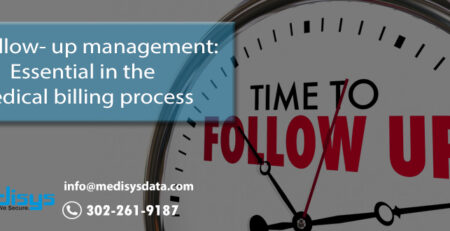Improving the revenue cycle starts with clean up your medical coding. Codes should have to be right, or the claims your facility or practice submit will be rejected. If claim get rejected mean you don’t get paid on time, and either resubmitting or going through a lengthy appeals process, with no guarantee of full payment for the codes you billed for.
Follow some basic rules to clean up your medical coding:
DOUBLE CHECK YOUR WORK:
A simple slip of the fingers can result in the incorrect entry of a procedure code. Information may also have been incorrectly documented on encounter forms or other supporting documentation. You can avoid a lot of medical coding errors just by double-checking your work.
CODING TO THE HIGHEST LEVEL:
The coder’s job is to code to the highest level of specificity. This means abstracting the most information out of the medical reports from the provider and taking accurate notes. It also means knowing the medical terminology for both procedures and diagnoses. Coding to a general level or undercoding can lead to a rejected or denied claim.
COMMUNICATE WITH EACH OTHER:
Any provider’s office has a lot of employees handling a number of tasks. While the billing, authorization, and coding departments all might work separately from each other, they still need to stay in touch. Communicate with the provider regularly will make it easier to ask them for clarification on any particularly thorny medical reports.
STAY UP TO DATE WITH REGULATORY CHANGES:
ICD-10 and CPT code manuals are updated annually. Also, if you’re a member of the American Academy of Professional Coders (AAPC) or American Health Information Management Association (AHIMA), you are required to complete education credits every two years to help you remain current.
FOLLOW THE NCCI AND MUE GUIDELINES:
Medicare and Medicaid have some minor differences regarding coding regulations than other insurance payers. Coders must report units of service based on the National Correct Coding Initiative (NCCI) and Medically Unlikely Edits (MUEs).
USE APPROPRIATE MODIFIERS:
Some CPT and HCPCS codes required the use of modifiers. They consist of two digit number, two letters or alphanumeric characters. Not all modifiers can be used with all CPT and HCPCS codes, Refer to the National Correct Coding Initiative (NCCI) for accurate Medicare and Medicaid coding. Become familiar with modifiers that are overused or used incorrectly.
AVOID UPCODING AND UNBUNDLING:
Upcoding errors can occur if the billing department employee makes a mistake when entering diagnosis and treatment codes or if the employee is confused by the information provided by the physician. Like under- and overcoding, unbundling is not so much of an error as it is a fraudulent practice. Unbundling is closely related to upcoding, in that it involves false reporting designed to earn the provider a higher payout from a payer. Unbundling means separately coding procedures that would normally be included in one umbrella code.
AVOID UNDER- AND OVERCODING:
We mentioned these in Course 3-7, but they’re worth mentioning again. Undercoding is the purposeful reportage of less expensive medical services that were performed, while overcoding is the reportage of more expensive procedures that were performed. Both of these are fraudulent and can lead to audits and investigations. These aren’t errors, per se, but we’re obligated to mention them here as something you absolutely must avoid.












